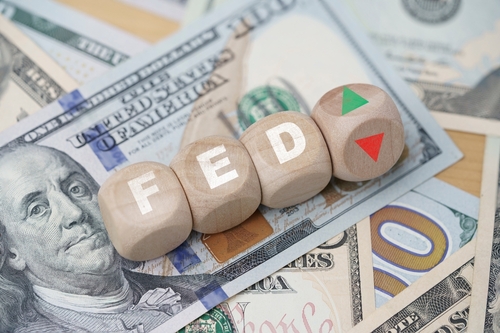
Monetary Policy & Inflation | US

Monetary Policy & Inflation | US
This article is only available to Macro Hive subscribers. Sign-up to receive world-class macro analysis with a daily curated newsletter, podcast, original content from award-winning researchers, cross market strategy, equity insights, trade ideas, crypto flow frameworks, academic paper summaries, explanation and analysis of market-moving events, community investor chat room, and more.
With inflation at 8.3%, the Fed has embarked on its fastest, most aggressive hiking cycle since 1982. After 225bp of hikes in six months, the federal funds rate (FFR) now stands at 3%. By tightening financial conditions, the Fed aims to lower demand in line with supply, cooling price pressures. But the problem is, tighter financial conditions are failing to slow the economy. Nonfarm payrolls – a good indicator of activity – have barely slowed (Chart 1).

One reason could be the famous ‘long and variable lags’ with which monetary policy gets transmitted to the economy. Alternatively, it could be because financial conditions impact the real economy less than people think. We believe it is the latter.
Since Ben Bernanke and Mark Gertler’s seminal 1995 article, central banks have assumed monetary policy gets transmitted to the real economy through financial conditions.
Many indices attempt to measure financial conditions. One of the most well-known is Goldman Sachs’ (GS) index. It is based on the FFR, 10yr yields, a trade-weighted dollar index, and equity prices relative to 10yr average EPS.
Per Bernanke and Gertler, you would expect changes in FCIs to lead to changes in the economy. However, FCIs are poor leading indicators of recession (Chart 2). FCIs tightened ahead of the 2001 recession, but not the 1991 and 2008 recessions. In the 2001 recession, FCIs peaked after the recession. And FCIs tightened in 2014-15 without a recession.

(Note: The GS index is unequally weighted, so I built an equally weighted one for comparison due to the debate on the subject.)
They are also coincident, not leading, indicators of growth (Chart 3). Basically, as the US economy has become more financialized, the correlation between FCIs and growth has increased.

I am not saying financial conditions do not impact growth. Rather, the links between the financial sector and economy appear to me too complex for a single number derived from historical relationships to describe.
Financial developments impact the real economy through three broad channels:
If we analyse those channels today, we find the reasons the Fed is having such a hard time:
In Q2 2022, household net worth fell to 7.9 times disposable income, from 8.2 times in Q1. Yet the household savings rate fell further. Household net worth will likely keep falling as markets continue to price a more aggressive Fed and residential real estate prices soften. However, this is unlikely to lead to a marked increase in the savings rate because:

Households are now exiting over a decade of deleveraging and face no deleveraging pressure. Instead, fast-increasing household debt suggests the savings rate is falling further.
Meanwhile, higher funding costs will likely impact household spending little.
First, after four decades of falling yields, households have locked in low funding rates. Despite a higher FFR and higher rents, in Q2, the ratios of household debt service and financial obligation (debt service plus rent, auto lease, owner insurance and property tax) to disposable income were still well below pre-pandemic levels.
A big factor keeping these ratios low is that mortgages, which comprise about 80% of US household debt, have fixed rates and very long maturities, typically 30 years.
Second, banks are yet to pass FFR hikes on to consumer rates (Chart 5).

Third, structural economic changes are limiting the impact of higher funding costs. Besides residential real estate, the other interest-sensitive component of household demand is demand for consumer durables, e.g., cars, that are typically funded by credit. Yet the pandemic has led to a structural increase in the demand for durables, which could reduce their interest sensitivity.
Like households, businesses will likely be insulated from tighter financial conditions. First, although businesses have been levering up, like households, they have locked in low, long-term funding costs.
Second, raw material prices tend to be negatively correlated to the dollar (Chart 6). A strong dollar therefore tends to lower corporates’ input costs.

Third, the US is much more domestically driven than other economies and therefore less exposed to a global slowdown. Like the euro area, it benefits from a large domestic market. But external trade accounts for only about 30% of the economy, contrasting the euro area’s 100%. Also, the US has a current account deficit while the euro area has traditionally had a current account surplus.
Fourth, and most importantly, the US is benefitting from reshoring. Due to supply chain disruptions, growing geopolitical risk and government intervention, US manufacturers have been investing more at home and less abroad.
In the mid-2000s, banks and households were overextended. Fed tightening therefore had devastating consequences.
Now, however, banks and households have strong balance sheets, and ongoing structural changes could have reduced the interest sensitivity of demand.
Consequently, the Fed may have to tighten policy by much more than the market is pricing to lower demand in line with supply. That is why, despite growing risks of recession outside the US and consequently of a stronger dollar, I continue to expect a terminal FFR near 8%.
A longer-run consequence could be that the Fed cannot slow demand significantly without triggering financial instability. The US has experienced over a decade of ultra-loose monetary policy. So the necessary strong policy tightening will probably unearth financial imbalances.
Spring sale - Prime Membership only £3 for 3 months! Get trade ideas and macro insights now
Your subscription has been successfully canceled.
Discount Applied - Your subscription has now updated with Coupon and from next payment Discount will be applied.